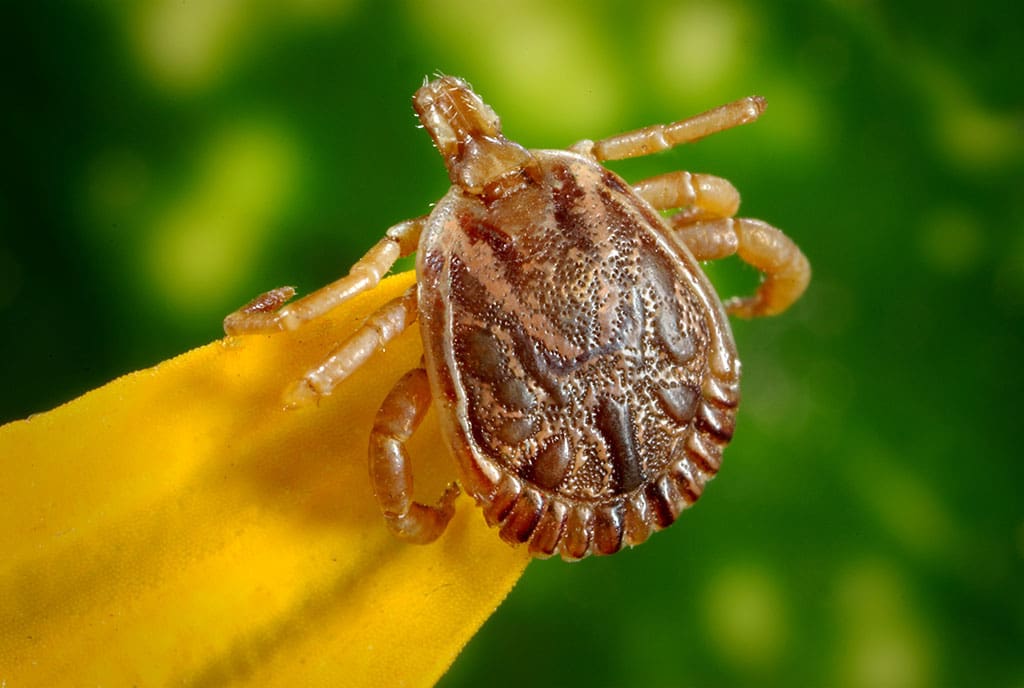Lyme disease is serious business all year for pets and for humans. Since it’s National Lyme Disease Awareness Month, it’s the perfect time to refamiliarize yourself with all you need to know about it to protect your pets and your two-legged family members, as well!
How is Lyme Disease Spread?
 Lyme disease is spread by black-legged ticks commonly known as deer ticks similarly to how heartworms are spread by mosquitoes. The ticks are vectors, meaning that they don’t cause the disease directly, but they can carry the nasty little bacterium that does: Borrelia burgdorferi. Deer ticks aren’t the most common ticks in the Piedmont region of NC (lone star ticks top the list), but their presence in any number is reason to exercise caution.
Lyme disease is spread by black-legged ticks commonly known as deer ticks similarly to how heartworms are spread by mosquitoes. The ticks are vectors, meaning that they don’t cause the disease directly, but they can carry the nasty little bacterium that does: Borrelia burgdorferi. Deer ticks aren’t the most common ticks in the Piedmont region of NC (lone star ticks top the list), but their presence in any number is reason to exercise caution.
Click here to check out this great map tool that reports confirmed cases of Lyme disease in dogs in 2018!
The reason Lyme disease can spread to pets and humans so easily is because ticks thrive in any environment with grass or shrubbery and especially in wooded areas. They hatch by the thousands. When they aren’t feeding on a host, they spend most of their time hanging out on leaves and grass waiting for their next meal to brush by and pick them up.
Once bitten by a tick carrying Borrelia burgdorferi, the good news is that it usually takes at least 24 hours for the bacteria to be transmitted to a pet or person. It isn’t instant.
Lyme Disease Prevention

Lacey, an adoptable Great Dane/ Lab mix from Great Dane Friends, plays in grass without fear of Lyme disease thanks to her tick prevention.
First thing’s first: give monthly flea and tick prevention to dogs and cats. The thing to note is that when a tick bites a pet who is current on their monthly preventive, the tick will die. Because it takes at least a full day of feeding for Lyme disease to be transmitted by a tick, this method of prevention is very effective. Just be sure not to give your dog’s preventive to your cat because some flea and tick products can be deadly to kitties while being totally safe for dogs. Stick to species-specific products.
Next, keep your yard trimmed and tidy. The more overgrowth you have with grass or shrubbery, the happier the ticks will be with their home. Don’t spark joy for ticks.
Lastly, get in the habit of checking your pets and yourself for ticks after a day spent outdoors. Outside time is important for us and our dogs to get exercise, so it shouldn’t be avoided. We just have to be sure we’re looking for and removing any ticks quickly.
Symptoms & Treatment
Lyme disease symptoms typically take at least a couple of months to present from the time of the offending tick bite. Some of the symptoms can masquerade as other issues initially, so it’s a good idea to be familiar with these.
- Fever
- Swollen joints
- Lameness
- Joint inflammation can migrate from one joint to another
- Lack of appetite
- Decreased activity
If your pet has these symptoms, see your vet. If you recall a tick bite on them, don’t forget to mention that during your appointment. Lyme disease is usually treated successfully with antibiotics.
Questions about tick prevention or other illnesses transmitted by them? Ask us!
*Dog photo courtesy of Great Dane Friends of Ruff Love – Great Dane rescue in NC and SC


 One of the reasons that cats often end up in need of emergency care is simply because of a well-intentioned mistake. Many cat owners have guessed that they could use the same flea and tick prevention on their cat as they can on their small dog. Unless a product has been specifically formulated for both species, this just is not true.
One of the reasons that cats often end up in need of emergency care is simply because of a well-intentioned mistake. Many cat owners have guessed that they could use the same flea and tick prevention on their cat as they can on their small dog. Unless a product has been specifically formulated for both species, this just is not true. 




